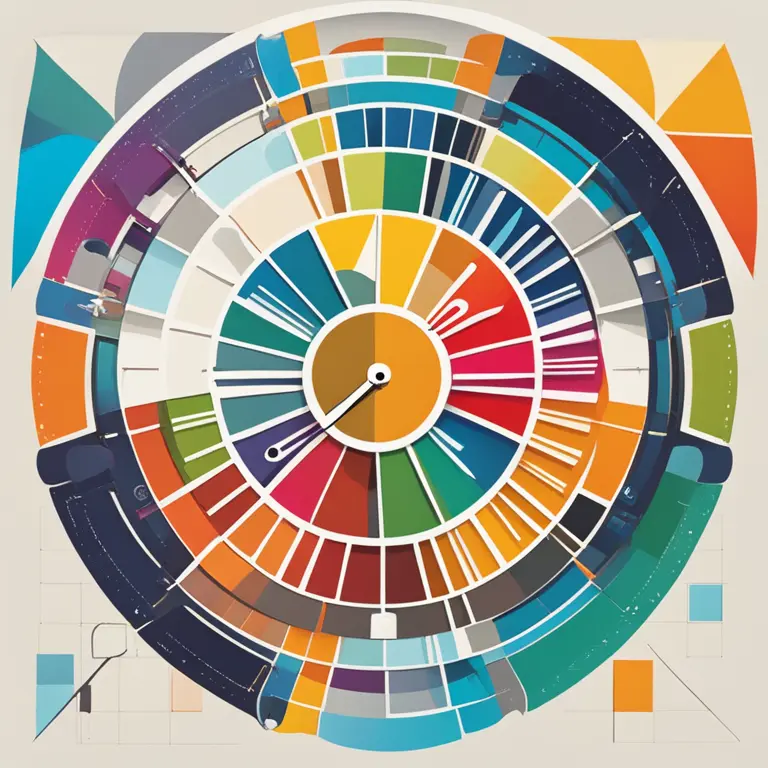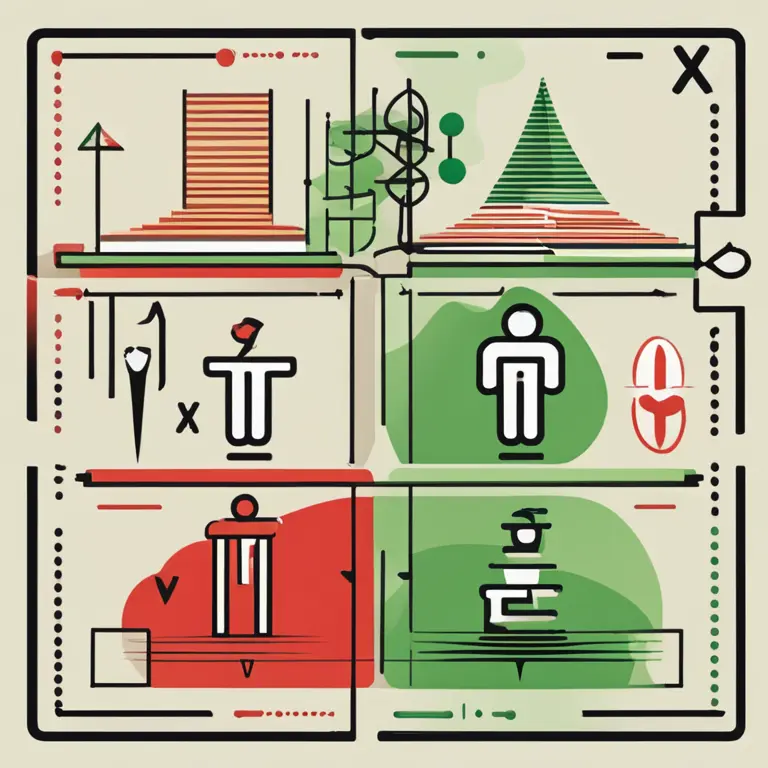
The Essence of Biorhythms: A Basic Guide
Discover the significance of biorhythms in this introductory article, covering the fundamental aspects of our innate physiological cycles.
article by Adrian Wallace
Defining Biorhythms
Through the lenses of our daily lives, we often seek to understand the ebbs and flows of our physical, emotional, and intellectual states. Biorhythms, a concept with roots in the early 20th century, propose that our lives follow certain predictable cycles. According to this theory, from the moment of our birth, we embark on three primary cycles: the physical (23 days), the emotional (28 days), and the intellectual (33 days). Each cycle oscillates between a high and low phase, influencing various aspects of our wellbeing and capabilities. This article serves as your primer to the intriguing world of biorhythm theory, a tool that some believe can enhance life through rhythm synchronization.

The Physical Cycle
The physical biorhythm cycle, lasting approximately 23 days, governs our vitality, strength, and overall physical condition. Proponents of biorhythms believe that when this cycle is in its positive phase, we may feel at our peak, enjoying increased stamina and robust health. Conversely, during the negative phase, our physical resilience might be lower, and caution in physical activities is advised. Monitoring this cycle can, according to the theory, aid in maximizing our physical potential by aligning strenuous activities with our body's innate timing.

The Emotional Cycle
In parallel with the physical cycle, we have the emotional biorhythm, spanning a 28-day period, closely mirroring the lunar month. This cycle is thought to impact our mood, creativity, and mental state. During the ascendant phase of this cycle, individuals might experience heightened emotional responses and a sense of harmony, while a descent can lead to a more introspective or reflective mood. Recognizing the patterns in this cycle could theoretically help in managing relationships and emotional well-being.

The Intellectual Cycle
The third pivotal cycle, the intellectual biorhythm, takes a 33-day course. It is said to influence cognitive functions such as analysis, decision making, and logical reasoning. During its high phase, mental acuity is purported to be sharper, suggesting an optimal time for intellectual pursuits. Conversely, the low phases may require a greater effort for cognitive tasks. By understanding and planning for the rhythmic dips and peaks, one could potentially optimize learning and problem-solving experiences.

Calculating Your Biorhythms
Calculating one's biorhythms initially involved complex charts and manual calculations, however, in this digital era, the process has been vastly simplified. A myriad of online tools and applications, developed with sophisticated algorithms, now provide personalized biorhythm charts with ease. Users can quickly input their birth data to receive insights into their personal cycles, equipping them with the knowledge to make informed decisions about health, interactions, and mental activities.
Criticism and Consideration
While biorhythms hold a certain allure, it's crucial to note that scientific consensus does not universally support the theory. Critics argue that empirical evidence for biorhythms is lacking and warn against overreliance on such cycles for important life decisions. As with many forms of alternative or holistic approaches, individuals are encouraged to consider biorhythmic information as one of many tools for self-understanding, rather than as an absolute determinant of one's condition or fate.
The Modern Perspective on Biorhythms
As we move further into the 21st century, the interpretation and application of biorhythms continue to evolve. Some modern advocates integrate biorhythm theory with technology, wearables, and smart devices to track and analyze physiological data over time, aiming to find correlating patterns that align with the traditional biorhythmic cycle construct. Whether seen as a scientifically questionable hypothesis or a valuable self-reflective tool, biorhythms undeniably spark curiosity into the interconnectedness of our physical, emotional, and intellectual rhythms.
Published: 1/25/2024
Modified: 1/25/2024
More predictions
Come back here soon to learn more about yourself and your future


The Basis of Biorhythms: An Insight into Biological Cycles
Delve into the concept of biorhythms, the belief in rhythmic biological processes that purportedly influence human physiology and behavior.


The Principles of Biorhythm Cycles
Discover the fundamental principles of biorhythm cycles and how they influence daily life and personal well-being in this insightful article.


The Human Biorhythm Cycle: Patterns of Life's Ebb & Flow
Delve into the human biorhythm cycle, a compelling concept in the holistic understanding of our physiological and emotional patterns over time.